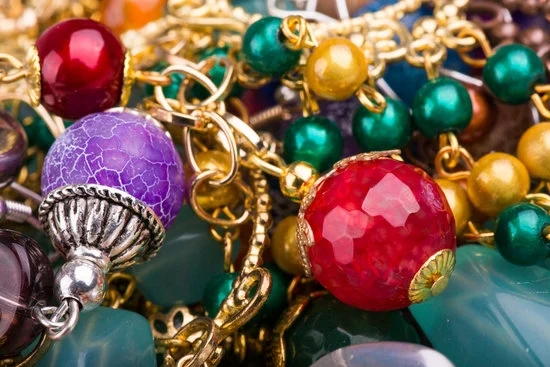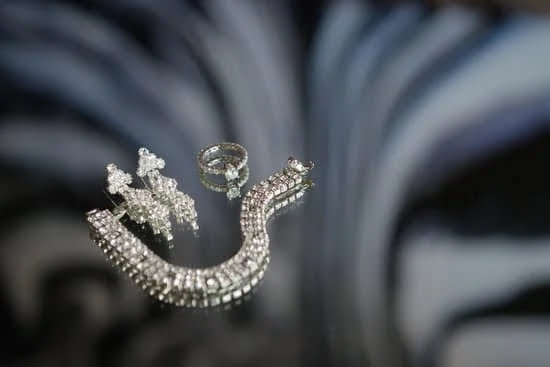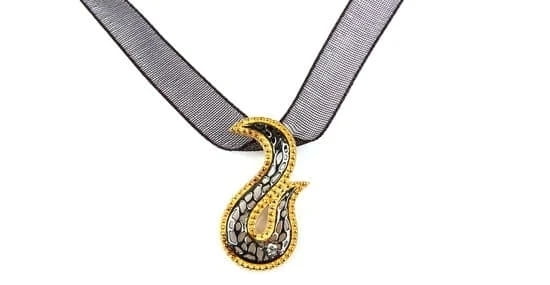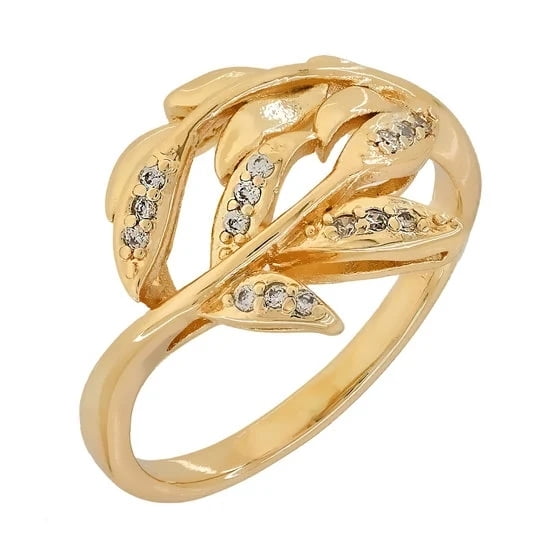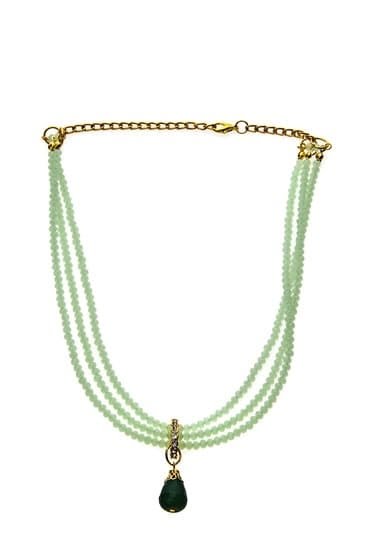Cheap jewelry may not come with a hefty price tag, but that doesn’t mean it deserves any less care and attention when it comes to cleaning and maintenance. In fact, due to the lower quality materials used in cheap jewelry, regular cleaning becomes even more vital to ensure its longevity and preserve its appearance. With the right techniques and a DIY mindset, you can effectively clean your cheap jewelry at home, saving both time and money.
Many people underestimate the hazards and buildup that can occur on cheap jewelry over time. Body oils, dirt, sweat, and exposure to various elements can all contribute to the dullness and tarnish of these pieces. Not only does this affect their aesthetic appeal, but it can also lead to skin irritation or discoloration. By incorporating regular cleaning into your jewelry routine, you can prevent these issues and keep your accessories looking fresh and beautiful.
Before diving into the cleaning process, it is essential to gather the necessary materials for a comprehensive DIY cleaning kit. From basic household items like mild soap and warm water to specialized tools such as polishing cloths or metal cleaners specific for different metals like copper, brass, or silver-having all these on hand will make the process much smoother. The key is understanding what materials are safe to use on your specific jewelry pieces without causing any damage.
In the upcoming sections of this article, we will guide you through various techniques for cleaning different types of cheap jewelry. From metal jewelry like copper or silver to gold-plated accessories or gemstone-studded pieces – we will cover it all. Furthermore, we will discuss how to properly clean beaded jewelry as well as costume jewelry made from non-precious materials. Along the way, we will also highlight common mistakes to avoid that could potentially harm your cherished pieces.
By following our tips and recommendations throughout this article, you’ll not only achieve sparkling results but also experience the satisfaction of DIY jewelry cleaning. So let’s get started on your journey to revitalizing and restoring the luster of your cheap jewelry.
Why Cheap Jewelry Needs Regular Cleaning
Cheap jewelry often lacks the same durability and quality as higher-end pieces, which means that it is more prone to damage and buildup. This is why regular cleaning is crucial for cheap jewelry. Understanding the potential hazards and buildup that can occur will help you recognize the importance of cleaning your inexpensive pieces.
One of the main hazards that cheap jewelry faces is tarnish. Tarnish occurs when metals such as copper, brass, and silver react with chemicals in the air or on your skin. Over time, this reaction causes a dark or dull appearance on the surface of the metal. If left untreated, tarnish can further corrode the metal and even cause it to break or become weak.
In addition to tarnish, cheap jewelry also tends to accumulate dirt, oils, and sweat from regular wear. These substances can get trapped between links, stones, or beads of your jewelry, making them look dull or dirty. If not cleaned regularly, this buildup can be difficult to remove and may require more intense cleaning methods that could potentially damage your jewelry.
| Type of Hazard/Buildup | Potential Consequences |
|---|---|
| Tarnish | Darkening or dullness of metal; corrosion over time leading to breakage |
| Dirt, oils, sweat | Dull or dirty appearance; difficult to remove if left untreated |
| Chemical reactions with certain substances (e.g., perfume) | Discoloration; chemical damage or eroding of materials over time |
Gathering the Necessary Materials
When it comes to cleaning cheap jewelry DIY, it is important to have the right materials on hand. A comprehensive DIY cleaning kit will ensure that you are properly equipped to clean a variety of different types of jewelry.
First and foremost, you will need a gentle jewelry cleaner solution. This can be purchased from a jewelry store or made at home using household ingredients such as dish soap and water or baking soda and water. It is important to choose a cleaner that is safe for the specific materials you will be cleaning, so be sure to read the labels carefully.
In addition to the cleaner solution, you will also need some soft cloths or brushes for cleaning purposes. Microfiber cloths are often recommended for their ability to effectively clean without scratching delicate surfaces. A soft toothbrush can also be used to gently scrub away dirt and grime from hard-to-reach crevices.
For metal jewelry, such as copper, brass, and silver, having a polishing cloth or metal polish on hand is essential. These tools can help remove tarnish and restore shine to dull or discolored metal pieces.
To properly organize and store your jewelry cleaning supplies, consider investing in a small storage container or box. This will keep everything in one place and make it easy for you to grab what you need when it’s time to clean your jewelry.
Overall, having a comprehensive DIY cleaning kit will make the process of cleaning cheap jewelry much easier and more efficient. By gathering all the necessary materials ahead of time, you can ensure that your precious pieces are well taken care of and kept sparkling for years to come.
| Materials | Description/Use |
|---|---|
| Gentle jewelry cleaner solution | A safe solution to clean various types of jewelry. |
| Soft cloths or brushes | To clean jewelry without scratching delicate surfaces. |
| Polishing cloth or metal polish | To remove tarnish and restore shine to metal jewelry. |
| Small storage container or box | To organize and store cleaning supplies. |
Preparing Your Jewelry for Cleaning
Before you begin cleaning your cheap jewelry, it is important to sort, organize, and identify the different types of jewelry you have. This will not only help you determine the most suitable cleaning method for each piece but also ensure that you handle them properly during the cleaning process.
To start, gather all your jewelry in one place and begin sorting them by material type. Separate metal jewelry from gemstone jewelry and beaded jewelry from costume jewelry. This initial step will make it easier to identify specific cleaning methods later on.
Next, organize your jewelry according to their condition. Group together tarnished or dirty pieces that require more intensive cleaning and separate them from those that just need a light touch-up. This will help streamline your cleaning process and save time.
Once you have sorted and organized your jewelry, take the time to identify the different types of materials used in each piece. Look for markings or labels that indicate the metal type (such as copper, brass, or silver) or whether a piece is gold or silver-plated. Additionally, examine gemstone jewelry to determine what stones are present (such as diamonds, rubies, emeralds) so that you can use appropriate cleaning methods for each stone.
Creating a system to categorize your cheap jewelry can be helpful when developing an efficient and effective cleaning routine. Consider using small containers or trays labeled with the different material types to store pieces awaiting cleaning. By taking the time to prepare your jewelry in this way, you can ensure that each piece receives proper care during the subsequent cleaning steps.
Now that you have sorted, organized, and identified your cheap jewelry collection, you are ready to move on to the next step: actually cleaning each piece using the appropriate methods outlined in this article.
Cleaning Metal Jewelry – Polishing and Removing Tarnish from Copper, Brass, and Silver
Metal jewelry, such as copper, brass, and silver, is prone to tarnish and can easily lose its shine over time. Regular cleaning of this type of jewelry is essential to maintain its beauty and prevent further damage. In this section, we will explore effective methods for polishing and removing tarnish from copper, brass, and silver jewelry.
Materials needed:
- Soft cloth or microfiber cloth.
- Mild dish soap.
- Lemon juice or vinegar.
- Aluminum foil.
- Baking soda.
Steps to clean metal jewelry:
- Prepare the cleaning solution: Fill a small bowl with warm water and add a few drops of mild dish soap. Gently mix the solution until it lathers.
- Clean with a soft cloth: Dip a soft cloth into the soapy water mixture and gently wipe the metal jewelry to remove any dirt or debris.
- Tackle tarnish with lemon juice or vinegar: If your metal jewelry has tarnish marks, you can use lemon juice or vinegar to remove them. Take a clean cloth and soak it in lemon juice or vinegar. Rub the tarnished areas gently until the tarnish comes off. Rinse the jewelry under running water to remove any residue.
- Restore shine using aluminum foil: For heavily tarnished metal jewelry, you can use aluminum foil to restore its shine. Line a small bowl with aluminum foil, shiny side up. Fill the bowl with warm water and add 2 tablespoons of baking soda. Place your tarnished jewelry in the bowl for approximately 5 minutes, then rinse it under running water.
- Dry thoroughly: After cleaning your metal jewelry, make sure to dry it thoroughly using a soft cloth before storing it.
Regular cleaning of metal jewelry will help to prevent tarnishing and maintain its beauty for years to come. By following these simple DIY cleaning techniques, you can enjoy sparkling and lustrous metal jewelry without spending a fortune.
Restoring Shine to Faded Gold and Silver-Plated Jewelry
Gold and silver-plated jewelry can be a great addition to any outfit, but over time, these pieces may start to lose their shine. Thankfully, there are DIY methods you can try at home to restore the sparkle to your faded gold and silver-plated jewelry.
Cleaning with Mild Soap and Water
One simple and effective way to restore shine to gold and silver-plated jewelry is by cleaning it with mild soap and water. Begin by filling a small bowl with warm water and adding a few drops of mild dishwashing soap. Gently place your jewelry in the bowl, ensuring that it is fully immersed, and let it soak for about 5-10 minutes.
After soaking, use a soft toothbrush or cloth to gently scrub away any dirt or residue that may have built up on the surface of the jewelry. Rinse well under lukewarm water and pat dry with a clean towel. This method is gentle enough for most gold and silver-plated jewelry but should not be used on pieces that contain gemstones.
Using Baking Soda Paste
Another method for restoring shine to faded gold and silver-plated jewelry involves making a baking soda paste. Mix equal parts baking soda and water in a small bowl until it forms a thick paste-like consistency. Apply the paste onto the jewelry using a soft cloth or brush, making sure to work it into all areas of the piece.
Let the paste sit for approximately 15 minutes so that it has time to effectively remove any tarnish or dullness from the surface of the jewelry. Afterward, rinse well under lukewarm water and buff gently with a clean, dry cloth until the shine is restored.
Varnishing for Long-lasting Shine
If you want your gold or silver-plated jewelry to maintain its shine for longer periods, you can consider using a clear varnish. This method acts as a protective barrier, preventing the jewelry from tarnishing and fading too quickly. Before applying the varnish, ensure that your jewelry is clean and dry.
Using a small brush or sponge, carefully apply a thin coat of the varnish onto the surface of the jewelry. Be sure to cover all areas evenly and let it dry completely before wearing or storing your jewelry. Remember to reapply the varnish every few months or as needed to maintain the shine.
By using these DIY methods, you can easily restore the shine to your faded gold and silver-plated jewelry without having to spend a fortune on professional cleaning services. With just a little time and effort, your jewelry will look as good as new, ready to be worn and admired once again.
Reviving Gemstone Jewelry – Safely Cleaning and Enhancing the Luster of Different Stones
Gemstone jewelry is known for its beauty and uniqueness, but over time, it can become dull and lose its luster. Regularly cleaning your gemstone jewelry is essential to maintain its sparkle and shine. However, it’s important to handle these delicate stones with care to prevent any damage or scratches. In this section, we will explore how to safely clean and enhance the luster of different types of gemstone jewelry.
Before cleaning your gemstone jewelry, it’s crucial to identify the type of stones you are working with. Different gemstones have various hardness levels and may require specific cleaning methods. For example, softer stones like pearls or opals should never be soaked in water or cleaned with harsh chemicals as they can get damaged easily. On the other hand, harder stones such as diamonds or sapphires can withstand more rigorous cleaning processes.
To clean most types of gemstone jewelry, start by gently wiping them with a soft microfiber cloth or a clean, lint-free cloth to remove any dirt or dust buildup. Avoid using paper towels or abrasive materials as they can scratch the surface of the stones. If needed, you can dampen the cloth slightly with water or use a mild soap solution specifically formulated for cleaning jewelry.
For delicate gemstones like pearls or opals, it’s best to use a specialized pearl cleaner that is gentle enough not to harm the stone’s surface. Simply dip a soft cloth into the pearl cleaner and gently wipe down each pearl. Do not soak pearls in water as it can cause them to lose their luster.
When dealing with more robust gemstones such as diamonds or sapphires, you can use an ultrasonic cleaner or a mixture of warm water and mild dish soap. Place your jewelry in a small mesh basket and immerse it in the soapy water solution. Allow it to sit for a few minutes before gently brushing the stones using a soft-bristle toothbrush.
| Type of Gemstone | Cleaning Method |
|---|---|
| Diamonds and Sapphires | Ultrasonic cleaner with warm water and mild dish soap |
| Pearls and Opals | Specialized pearl cleaner or soft cloth dampened with water |
| Rubies and Emeralds | Gentle cleaning in warm, soapy water and soft-bristle toothbrush |
Tackling Beaded Jewelry – Removing Dirt, Dust, and Stains from Beads and Threads
Beaded jewelry is a popular choice for its unique beauty and versatility. However, over time, dirt, dust, and stains can accumulate on both the beads and the threads. Cleaning beaded jewelry requires specific techniques to ensure that the beads are not damaged in the process. Here are some tips for effectively removing dirt, dust, and stains from beaded jewelry:
- Sorting and Organizing: Before cleaning your beaded jewelry, it’s essential to sort and organize them based on their material or type. This will help you determine the appropriate cleaning method for each piece. Separate fragile or delicate beads from sturdier ones to avoid any accidental breakage during the cleaning process.
- Dusting: Start by gently dusting off any loose dirt or debris from the surface of the beads using a soft-bristled brush or a microfiber cloth. Be careful not to apply too much pressure, as it could cause the beads to scratch or break.
- Cleaning Threads: If the threads of your beaded jewelry have become dirty or discolored, you can clean them separately. Fill a small bowl with warm water and add a mild detergent or gentle soap solution. Gently swish the threads in the soapy water for a few minutes, then rinse them thoroughly with clean water. Place them on a clean towel to air dry before reassembling your jewelry.
- Deep Cleaning Beads: For tougher stains or debris stuck on the beads themselves, you can create a gentle cleaning solution by mixing warm water with a few drops of mild dish soap. Using a soft toothbrush or an old makeup brush, gently scrub each bead individually, paying close attention to any areas with visible stains or dirt buildup.
- Rinse and Dry: After cleaning your beaded jewelry, make sure to rinse off any soap residue thoroughly under running water until it is completely clean. Use a soft cloth or towel to pat dry your jewelry gently. Avoid rubbing or twisting the threads while drying, as this can cause damage or tangling.
Remember, beaded jewelry is delicate and can easily break or scratch. It is important to handle each bead with care and use gentle techniques when cleaning. By following these tips, you can effectively remove dirt, dust, and stains from your beaded jewelry while preserving its beauty and prolonging its lifespan.
Dealing with Costume Jewelry – Tips for Cleaning and Maintaining Non-precious Materials
When it comes to cleaning and maintaining costume jewelry, it’s important to take a different approach compared to precious materials. Costume jewelry typically consists of non-precious metals, plastic, glass, or other synthetic materials that can be more delicate and prone to damage. However, with the right techniques and precautions, you can keep your costume jewelry looking its best for a long time.
One important tip for cleaning and maintaining costume jewelry is to avoid using harsh chemicals or abrasive materials. These can easily scratch or discolor the surface of the jewelry. Instead, opt for gentle cleaning solutions such as mild soap and water or a non-abrasive jewelry cleaner specifically formulated for costume jewelry.
To clean your costume jewelry, start by carefully examining each piece for any loose stones or components. If you find any loose parts, secure them before cleaning to prevent further damage. Then, use a soft brush or cloth to gently remove any dirt or debris from the surface of the jewelry.
Another tip is to be mindful of where and how you store your costume jewelry. Avoid exposing it to direct sunlight as this can cause color fading or discoloration over time. Additionally, consider storing each piece separately in a soft pouch or individually lined compartment to prevent scratches and tangling.
Finally, regular maintenance is key in keeping your costume jewelry looking its best. After wearing your pieces, wipe them down with a soft cloth to remove any oils or residue that may have accumulated throughout the day. This will help maintain their shine and overall appearance.
By following these tips for cleaning and maintaining costume jewelry, you can prolong its lifespan and keep it looking beautiful for years to come. Remember that although these pieces may not be made from precious materials, they still deserve proper care and attention to ensure their longevity and sparkle.
Common Mistakes to Avoid
Using Harsh Chemicals
When it comes to cleaning cheap jewelry, one of the most common mistakes to avoid is using harsh chemicals. Many commercial cleaning products contain strong chemicals that can damage or discolor your jewelry, especially if it’s made of non-precious metals or has delicate gemstones. Instead, opt for gentle and natural cleaners that won’t cause any harm.
Scrubbing Too Hard
Another mistake to watch out for is scrubbing your jewelry too vigorously. While you may think that scrubbing harder will make your jewelry cleaner, it can actually cause more harm than good. Scrubbing too hard can scratch delicate surfaces and gemstones or loosen settings. To prevent any damage, use a soft toothbrush or cloth and gently clean your jewelry in small circular motions.
Neglecting to Dry Properly
After cleaning your cheap jewelry, it’s crucial to ensure that you dry it properly before storing or wearing it again. Failing to do so can lead to the buildup of moisture, which can eventually tarnish the metal or create a breeding ground for bacteria on organic materials like pearls or wood beads. Use a clean, lint-free cloth to pat dry your jewelry thoroughly and let it air-dry completely before putting it away.
Overexposing Jewelry to Water
While cleaning your cheap jewelry involves using water, overexposure to water can be harmful in certain cases. To prevent any potential damage, avoid submerging jewelry pieces made with porous materials such as wood or unsealed stones in water for extended periods of time. Instead, opt for mild cleansers that require less exposure to water or use a damp cloth for spot-cleaning such items.
Ignoring Special Care Instructions
Different types of cheap jewelry may require special care and attention. It’s essential to read and follow any care instructions provided by the manufacturer or consult a trusted source for advice on cleaning specific jewelry materials or gemstones. Failure to do so can result in irreversible damage or diminished quality of your jewelry.
By avoiding these common mistakes, you can ensure that your DIY jewelry cleaning efforts are successful and don’t cause any harm to your inexpensive pieces. Taking the time to educate yourself on proper cleaning techniques and using suitable materials will not only keep your cheap jewelry sparkling but also extend its lifespan for years to come. Remember, with a little extra care, you can enjoy the beauty of your inexpensive jewelry for as long as possible.
Reassembling and Storing Your Freshly Cleaned Jewelry
After successfully cleaning your cheap jewelry DIY, it is important to properly reassemble and store them to maintain their cleanliness and prevent damage. Here are some tips to help you in this crucial step:
- Sort and organize: Before reassembling your jewelry, take the time to sort and organize them according to type or material. Separate your earrings, necklaces, bracelets, and rings into different compartments or containers to prevent tangling and scratching. This will also make it easier for you to find the pieces you want to wear later.
- Inspect for any damage: While cleaning your jewelry, you may have discovered some loose stones or broken clasps. Take this opportunity to inspect each piece again before storing them. Repair any damages or seek professional help if needed, as storing damaged jewelry can result in further deterioration.
- Avoid exposure to moisture: Moisture can cause metal jewelry to tarnish quickly or even corrode over time. Ensure that your freshly cleaned jewelry is completely dry before storing them. If necessary, use a soft cloth or towel to pat them dry gently. Additionally, consider adding silica gel packets or anti-tarnish strips in your storage containers to absorb moisture and prevent tarnishing.
- Store individually: To avoid scratches and tangles, store each piece of jewelry individually in a soft cloth bag, pouches with dividers, or small plastic zip-top bags. This will also help protect delicate gemstones from getting chipped or damaged by other pieces rubbing against them.
- Avoid direct sunlight and temperature fluctuations: Sunlight can fade gemstones’ colors over time while extreme temperature changes can cause metal settings to expand or contract, leading to loosened stones or warping of the structure. Store your jewelry away from direct sunlight in a cool, dry place like a drawer, closet, or dedicated jewelry box.
- Regular maintenance: Even though you’ve successfully cleaned your jewelry, it is important to periodically check and clean them again to maintain their sparkle. Regularly inspect for any signs of tarnish, loose stones, or other damage. If needed, refer back to the appropriate section in this article for DIY cleaning instructions.
By following these tips for proper storage and maintenance, you can ensure that your freshly cleaned cheap jewelry will continue to shine and last longer. Taking care of your jewelry not only keeps them looking beautiful but also preserves their value and sentimental significance.
Final Thoughts
Cleaning cheap jewelry DIY can be a rewarding and satisfying task. Not only can it save you money by avoiding professional cleaning services, but it also allows you to maintain the sparkle and beauty of your favorite pieces. By following the steps outlined in this article, you can achieve sparkling results and take pride in your DIY jewelry cleaning skills.
One of the greatest joys of DIY jewelry cleaning is witnessing the transformation of your dull and dirty pieces into shiny and lustrous ones. Whether it’s restoring the shine to faded gold-plated jewelry or enhancing the luster of gemstone pieces, the process allows you to breathe new life into your beloved accessories. The satisfaction derived from seeing the before-and-after results cannot be overstated.
In addition to achieving sparkling results, DIY jewelry cleaning also gives you a deeper connection with your pieces. Cleaning, organizing, and maintaining them yourself allows you to understand their intricacies, identify any potential issues or defects, and reaffirm their value in your collection. Taking responsibility for their upkeep not only prolongs their lifespan but also reinforces the personal attachment and sentimental value they hold for you.
So next time you notice tarnish or dirt on your cheap jewelry, don’t hesitate to grab your DIY cleaning kit and give them some tender loving care. With proper techniques and materials at hand, you can restore their shine, enhance their luster, and enjoy wearing them with a renewed sense of pride. Embrace the satisfaction that comes with achieving sparkling results through DIY jewelry cleaning.
Frequently Asked Questions
How do you clean non expensive jewelry?
Cleaning non-expensive jewelry requires gentle yet effective methods to ensure the pieces retain their shine and beauty. Start by preparing a mixture of lukewarm water and a mild detergent or dish soap. Gently place the jewelry in this solution and let it soak for a few minutes.
Next, use a soft-bristled toothbrush or a cloth to gently scrub the jewelry, paying attention to hard-to-reach areas where dirt might accumulate. Rinse the jewelry with clean water and pat it dry with a soft cloth or let it air dry. Avoid harsh chemicals or abrasive materials as they can damage non-expensive jewelry.
How do you remove tarnish from cheap jewelry?
Removing tarnish from cheap jewelry can be done using household items that are readily available. First, prepare a mixture of equal parts white vinegar and water in a bowl. Place the tarnished jewelry into the solution and allow it to soak for at least 15 minutes, or longer if needed.
After soaking, use a soft cloth or toothbrush to gently scrub away any remaining tarnish. Rinse the jewelry thoroughly with clean water and pat dry with a soft cloth before storing it properly. This method is effective in removing tarnish without causing damage to inexpensive jewelry.
What is the best homemade cleaner for jewelry?
When it comes to homemade cleaner options for all types of jewelry, one popular recipe involves using baking soda, dish soap, and warm water. Start by mixing equal parts baking soda and dish soap in a bowl until you create a paste-like consistency.
Add some warm water gradually while stirring until the paste becomes slightly runny but still thick enough to coat your jewelry easily.

Welcome to my jewelry blog! My name is Sarah and I am the owner of this blog.
I love making jewelry and sharing my creations with others.
So whether you’re someone who loves wearing jewelry yourself or simply enjoys learning about it, be sure to check out my blog for insightful posts on everything related to this exciting topic!

